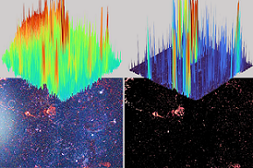
Nanotech, Deep Learning Combine to Detect Pediatric Tuberculosis
A technique for diagnosing tuberculosis (TB) in children takes advantage of the optical properties of gold nanoparticles to detect the disease. The technique uses an artificial intelligence (AI) algorithm to enhance the sensitivity of the test.
According to the research team from the University of Washington School of Medicine and Tulane University, it is particularly challenging to diagnose TB in children. Samples of the bacteria that are markers of the disease are difficult to obtain from children, even when sputum-based testing is used.
The researchers developed a way to optically detect two virulence factors for TB — the lipoarabinomannan (LAM) molecule and an associated protein called LprG. These factors are found on vesicles in the blood cells of people with TB.
Macrophages, a type of white blood cell that engulfs and digests pathogens, sheds vesicles studded with LAM and LprG when TB is present. The researchers used an optical approach to target LAM and LprG molecules to identify the vesicles secreted by TB-infected cells.
“The problem is that every cell in our body produces thousands of vesicles a day,” said professor Tony Ye Hu, who led the research team. “A blood sample might have billions of vesicles, of which only a few hundred will have been derived from TB-infected macrophages.”
The researchers coated 50-nm gold nanoparticles with antibodies that bind to LAM and LprG. In blood samples containing TB-infected vesicles, the antibodies bound to the LAM and LprG molecules studding the vesicles. The team used low-magnification dark-field microscope (DFM) image analysis to detect the gold nanoparticle probes binding to the LAM and LprG molecules on the vesicles.
Low-magnification DFM analysis can be automated, making it suitable for clinical applications. However, it is subject to artifacts that can increase background noise and reduce sensitivity.

Background noise (left) obscures the presence of TB membrane components in blood. At right, AI has removed noise, confirming diagnosis. A multi-institutional research team has applied an AI algorithm to optical nanotechnology to develop a technique for the diagnosis of TB in children. Courtesy of Wenshu Zheng.
To make the test more sensitive, the researchers created an artificial intelligence algorithm to automatically capture the low-magnification DFM images and process the images to reduce artifacts introduced during the assay.
The algorithm removed background noise that can be caused by substances on the surfaces of the nanoparticles and enables rapid sample analysis.
The researchers hybridized vesicles isolated from cells with TB with dilutions of anti-LAM, antibody-conjugated gold nanorod probes to determine the probe concentration needed to maximize the signal-to-noise ratio at low-target vesicle concentrations.
To evaluate the technique, the researchers tested blood from animals infected with TB. They found that they could reliably detect TB infection and also could determine whether the infection was active or in a latent state — a distinction that could be used to guide treatment.
The researchers also tested blood samples collected from previous studies conducted in children with HIV, a group at high risk of contracting TB. The test demonstrated high sensitivity, accurately detecting TB in 39 of 44 of children who were known to have confirmed TB; and identifying an additional 57 of 77 children with unconfirmed TB that standard tests had missed.
“The biomarker levels also went down after starting treatment, highlighting the test’s potential as way to monitor the response to treatment,” said professor Sylvia LaCourse, who led the clinical portion of the study.
Work to evaluate the assay in prospective studies of children with suspected TB is ongoing. Although the current test still requires a sophisticated lab to perform, Hu said it is being adapted so it can be performed in the community with a smartphone.
“TB is a disease found primarily in resource-limited areas,” Hu said. “The ideal is to create a smartphone-based method that could be used at the point-of-care in these settings.”
Of the quarter million children younger than 15 years of age who die from TB each year, more than 80% are younger than five. In almost all these cases, roughly 96%, the children had not been diagnosed.
“This is a tragedy because when children are diagnosed and treated, they do well,” LaCourse said.
The research was published in Nature Biomedical Engineering (www.doi.org/10.1038/s41551-022-00922-1).
Published: September 2022